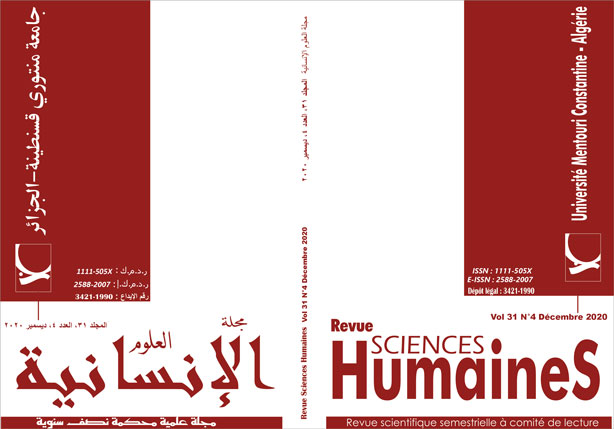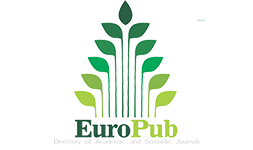Teachers’ Practices of Critical Thinking in the Algerian Secondary School EFL Classroom
Keywords:
Critical thinking, Bloom’s taxonomy, Socratic questioningAbstract
Critical thinking (CT) is unanimously considered to play a pivotal role in individuals’ academic life. This paper investigates the teachers’ practices of CT in the Algerian EFL secondary school classroom. It aims mainly at examining the teachers ‘implementation of CT through two procedures: Socratic questioning and Bloom’s taxonomy, hypothesizing that if teachers use Socratic Questioning and Bloom’s Taxonomy, CT would be implemented and learners’ CT skills would be fostered. To fulfill the purpose of this study, a questionnaire is administered to 20 secondary school teachers. The results revealed the teachers’ awareness of the importance of CT skills and the effectiveness of using Socratic Questioning and Bloom’s Taxonomy in fostering CT in EFL classroom despite the absence of a guiding and motivating. framework for its implementation.
Downloads
References
Apsari,N. (2016). Teachers’ Way to Foster Critical Thinking in the Classroom (a case study of a senior high school in Bandung). Journal of English and Education, volume 04 (1), 51-72
Asgharheidari, F.& Tahriri.A. (2015). A Survey of EFL Teachers’ Attitudes Towards Critical Thinking Instruction. Journal of Language Teaching and Research volume 06 (02). P.388.Doi 10.17507/jltr.0602.20.
Bloom,B. (1956) Taxonomy of Educational Objectives: The Classification of Educational Goals, Volume 1. D.Mckay, 1956.
Brookfield,S. (2011). Teaching for Critical Thinking and Techniques to Help Students Question their Assumptions. John Wiley & sons Inc.
Dewey, J.(1910). How we Think. Boston: DC. Health & Company. University of Michigan
Edmonds,M; Janik, E; and Rylance,K.(2005). History and Critical Thinking: A Handbook for Using Historical Documents to Improve Students’ Thinking Skills in the Secondary Grades. Madison: Wisconsin Historical Society;
Elder,L.&Paul,R.(2010). Critical Thinking Competency Standards Essential for the Cultivation of Intellectual Skills, Part.1. Journal of Developmental Education. 34(2),38.
Ennis,R.(1989). Critical Thinking and Subject Specificity, Clarification and Needed Research. Educational Researcher, 18(03). URL: https://www.jstor.org/stable/1174885
Ennis,R. (1992). Critical Thinking: A Streamlined Conception. The Palgrave Handbook of Critical Thinking in Higher Education, PP 31-47
Facione,P.(1989).Critical Thinking: A Statement of Expert Consensus for Purposes of Educational Assessment and Instruction. Facione and Insight Assessment. From:http://www.researchgate.net/publication/242279575-Critical-Thinking-A-Statement of Expert-Consensus-for Purposes-of Educational-Assessment-and Instruction
Fuquen Martinez, A. and Jimenez Nino, P.K (2013). Implementing Tasks that Stimulate Critical Thinking in EFL Classrooms. Cuadernos De Linguistica Hispanica, (21), 143- 158.
Mitchell,M.P.(2015). Metacognition: Nurturing Self-awareness in the Classroom. Retrieved May 28,2018. From http://www.edutopia.org
Murawski, L.M. (2014). Critical Thinking in the Classroom…and Beyond. Journal of Learning in Higher Education.10 (01).
Murray,M. (2006). Barriers High School Teachers Encounter in Teaching Critical Thinking in Writing. Walden University. Walden Dissertations and Doctoral Studies Collection. PP 16-19
Ni Putuayu, A.N. (2016). Teachers’ Way to Foster Critical Thinking in the Classroom (A Case Study of a Senior High School in Bandung). Journal of English and Education.2016, 4(1).PP.51-72
Omolara,S.R. and Adebukola,O.R.(2015). Teachers’ Attitudes: A Great Influence on Teaching and Learning Social Studies. Journal of Law, Policy and Globalisation.2015, 42:2224-3259.
Paul,R. and Elder,L.(2007). Critical Thinking Competency Standards.Strandards, Principles, Performance, Indicators, and Outcomes with a Critical Thinking Master Rubric. The Foundation for Critical Thinking Press.
Ragins,B.R., Cotton, J.L. (1999). Mentor Functions and Outcomes: A Comparison of Men and Women in Formal and Informal Mentoring Relationships. Journal of Applied Psychology,84 (1999, pp. 529- 550)
Rayhanul, I.S.M. (2015). What are the Importance and Benefits of Critical Thinking Skills?. Retrieved May11, 2020.
From http://www.linkedin.com/Pulse/what/importance/benefits/critical/thinking/skills/Islam
Sternberg,R.J.. Roediger,H.L,III, and Halpern, D.F.(Eds). (2007). Critical Thinking in Psychology. Cambridge University Press.
Sternberg, R.J; & Halpern,D.F.(2020). Critical Thinking in Psychology. Cambridge University Press.
Sullvian, J. (2020). How Does Bloom’s Taxonomy Relate to Critical Thinking Information? Retrieved June 15,2020, from : https://classroom,synonym.com/bloom-relate-critical-thinking-information-6233382.html
Tosuncuoglu,I. (2018). Place of Critical Thinking in EFL. International Journal of Higher Education. 7(4). Doi: 10.5430/ijhe. v7n4p26
Trushel,J.(n.d). What tutors Can do to Enhance Students’ Critical Thinking Skills Through the use of Bloom’s Taxonomy. The Association for the Tutoring Profession.
Downloads
Published
How to Cite
Issue
Section
License

This work is licensed under a Creative Commons Attribution-NonCommercial-ShareAlike 4.0 International License.
















